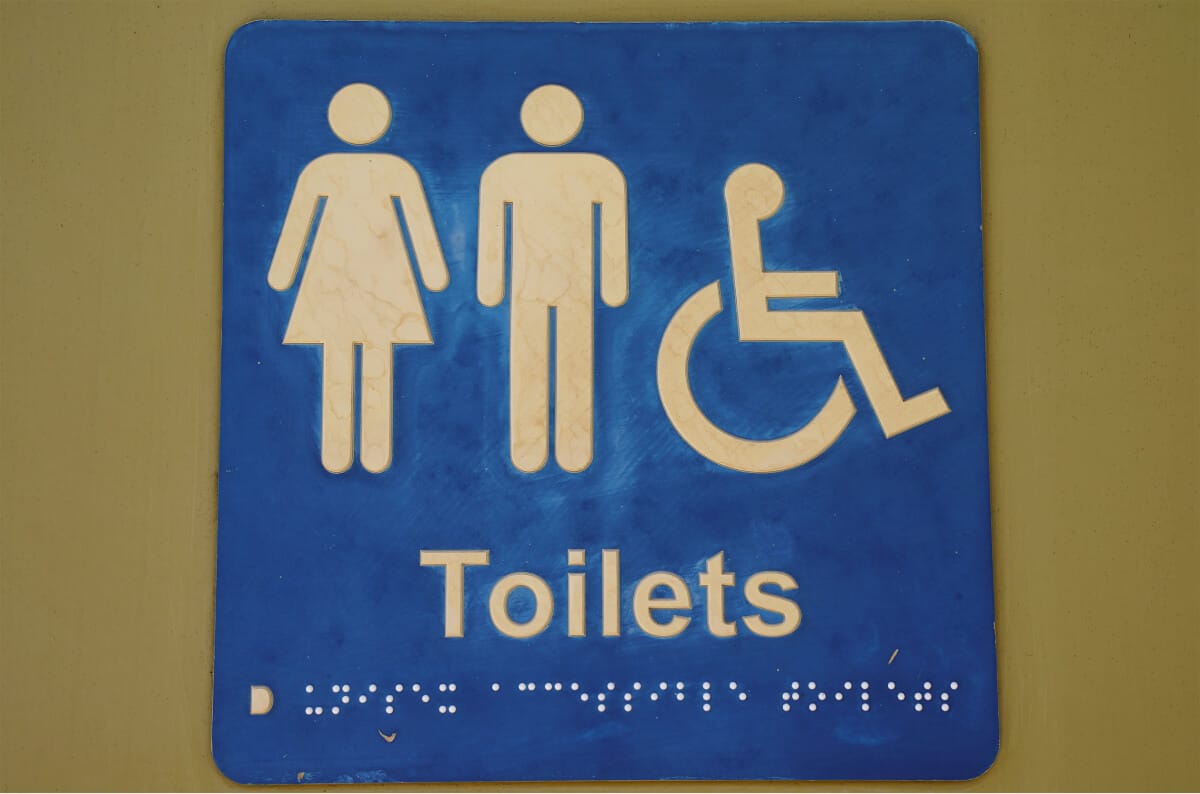One way to make sure your business feels welcoming and accessible to everyone is to provide ADA-compliant Signage. Adaptive Signage provides high-quality ADA signage in Westchester County. We’re here to help you decipher the cumbersome and confusing ADA regulations and recommendations so you can get the signs you need to connect more effectively with all your customers.
In general, ADA sign requirements are categorized as follows:
- When or if signs are required
- Where signs must be mounted
- What features must be included or excluded in sign design
When are ADA Signs Required?
ADA-compliant Signage serves three purposes:
- To mark permanent interior spaces
- To provide directions and information relating to permanent interior spaces
- To identify, direct to, or inform patrons about accessibility features
ADA sign requirements apply to permanent Signage on public buildings. Changeable or temporary signs, including directories or menus, fall outside the requirements. In addition, custom signs and branding such as names and logos are not regulated. That said, it’s up to building owners and designers to determine which rooms are “permanent.” For example, bathrooms are usually considered permanent and require ADA signage, whereas a lobby or office may not qualify as permanent.
The regulations do specify certain situations where signs are mandatory, including the following:
- Exits
- Areas of Refuge
- Inaccessible entrances, elevators, and restrooms must have directional Signage providing directions to the nearest accessible entrance, elevator, or restroom.
- Devices. ADA signs are required to assist in locating such things as TTYs, Assistive Listening Systems, and Volume Control Telephones
- Bathrooms, classrooms, and other permanent rooms accessible using an outdoor entrance should be marked with an exterior ADA sign.
- Handicapped and accessible parking spaces
- Warnings of hazards
When in doubt, hang a sign. It never hurts to make certain that everyone can find what they need and feel welcome in your space.
Where Should Signs Be Mounted?
Signs are consistently positioned to be more accessible for the visually impaired to find, identify, and read. Additionally, braille signage needs to be within reach of individuals in a wheelchair. With these considerations in mind, ADA requirements for mounting signs include the following:
MOUNTING LOCATION
- Signs need to be mounted adjacent to the side of the door with the handle. If there is insufficient space on the latch side of the door, the sign can be hung on the nearest wall. Visually impaired people learn to find the door handle and locate the movement on the adjoining wall.
In the case of double doors:
- When one door is fixed, the sign can be centered on the fixed door
- When both doors open, the sign should be mounted to the side of the door on the right
- On doors that swing outward, the sign should be mounted beyond the arc of the door
MOUNTING HEIGHT
Signs need to be mounted, so the center horizontal line of the sign is 60 inches above the floor. The tactile characters on signs should be located between 48 inches and 60 inches above the floor, measured from the base of the lowest character to the bottom of the highest character.
- Tip: It often hangs all signs 54” from the floor surface to the bottom of the sign.
What Features Must Be Included or Excluded in ADA Signs?
ADA sign requirements depend on the sign’s purpose. For signs that provide identification, tactile characters are required, and pictograms are sometimes needed. For informational or directional signs, tactile characters and pictograms are not required. While many ADA-compliant Signage includes braille, raised characters, and pictograms, ADA requirements don’t necessarily specify all three needs in every situation. Font size, type, finish, and contrast requirements apply for all signs.

Trust Adaptive Signage
This brief introduction to ADA-compliant Signage illustrates how complicated these regulations can be. Adaptive Signage creates custom signs in Westchester County, NY, to help our customers comply with ADA regulations. Our signs will assist people of all abilities to move through your business with ease. We understand the rules, so call us today.
